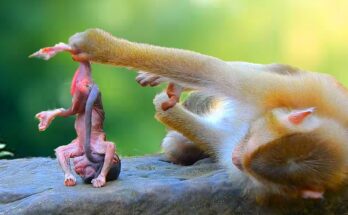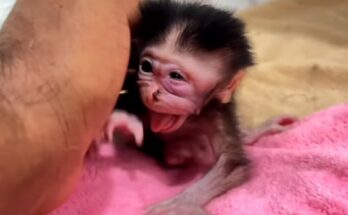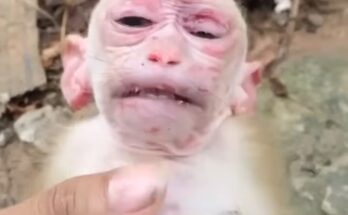Deep in the heart of the forest, a troop of monkeys once thrived among the treetops. Agile and playful, they swung from branches, feasting on fruit and caring for their young. But everything changed when their home was torn apart by human activity. Logging machines, loud and relentless, flattened their habitat in a matter of days, forcing the terrified animals to flee.
With nowhere else to go, the poor monkeys ventured closer to human settlements. There, they faced new dangers—vehicles, electric wires, and attacks from frightened people. Their fur once full of life and shine now matted with dirt and blood, and their eyes told a story of suffering and desperation. Many were badly injured—limbs broken from falls, open wounds from barbed fences, and some barely able to move. It was heartbreaking.
What’s most pitiful is not just their physical pain, but the confusion and fear in their eyes. These creatures, once free and joyful, were now struggling to survive in a world that no longer welcomed them. Some huddled in abandoned buildings for warmth, while others scavenged trash just to feed their young. Mothers clung to their injured babies, desperate for help that never came.
A few kind-hearted people tried to intervene, offering food and shelter, but it was never enough. Without coordinated rescue or rehabilitation efforts, most of the monkeys continued to suffer in silence.
This tragedy is not just about animals—it’s a reflection of how human expansion carelessly pushes other lives to the edge. These monkeys didn’t choose to invade our spaces; we invaded theirs. Their injuries are wounds we caused. Their pain, a result of our actions. And their pitiful struggle to survive is a story we must never ignore.


